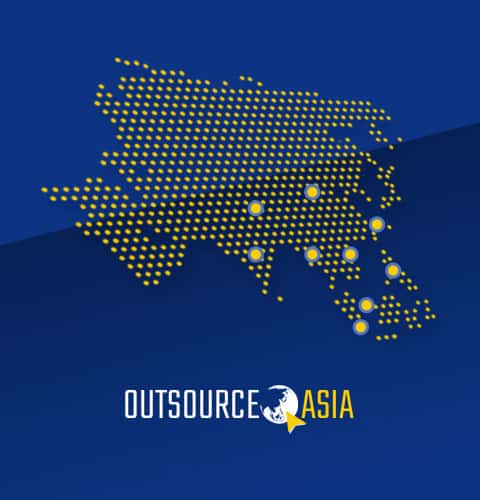
Strategies for Cost-Effective Outsourcing in 2024
Outsourcing has become an integral part of business operations, offering a myriad of benefits to companies seeking efficiency, flexibility, and enhanced competitiveness. As we navigate the evolving landscape of 2024, businesses are placing increased emphasis on cost-effective outsourcing strategies to maximize their advantages. In this article, we will explore the various benefits of outsourcing, delve into why it is inherently cost-effective, and provide actionable tips and strategies for businesses looking to optimize their outsourcing processes.
I. The Benefits of Outsourcing
A. Focus on Core Competencies – Outsourcing allows businesses to focus on their core competencies by delegating non-core functions to specialized external partners.
B. Access to Global Talent – Companies can tap into a global pool of talent, gaining access to specialized skills and knowledge that may be scarce or expensive locally.
C. Enhanced Flexibility – Outsourcing provides the flexibility to scale operations up or down based on business needs, offering agility in a dynamic market.
D. Time Efficiency – With tasks handled by dedicated teams, businesses can save time and accelerate project timelines.
E. Risk Mitigation – Sharing responsibilities with outsourcing partners can help distribute business risks and enhance resilience.
F. Innovation and Technological Integration – Outsourcing allows businesses to benefit from cutting-edge technologies and innovative solutions without the need for substantial investments.
II. Outsourcing: A Cost-Effective Solution
One of the key driving factors behind the popularity of outsourcing is its inherent cost-effectiveness. Several reasons contribute to this financial advantage:
A. Labor Cost Arbitrage
Outsourcing to regions with lower labor costs is a cornerstone of cost-effective outsourcing. By leveraging the wage disparities across different geographic locations, businesses can achieve significant savings while maintaining or even improving the quality of services. This practice enables companies to reallocate budget resources more efficiently and invest in other critical areas of their operations.
B. Infrastructure Savings
Outsourcing not only provides a pool of skilled professionals but also alleviates the burden of maintaining and upgrading infrastructure. Outsourcing partners often come equipped with state-of-the-art facilities and technology, reducing the need for the client to make substantial capital expenditures. This leads to substantial savings in terms of physical space, equipment, and technology infrastructure.
C. Economies of Scale
Outsourcing service providers work with multiple clients across various industries, allowing them to capitalize on economies of scale. By spreading fixed costs such as facility maintenance, utilities, and technology investments over a broader client base, outsourcing partners can offer more competitive pricing. This results in a lower overall cost per unit of service for each client, contributing to the cost-effectiveness of outsourcing.
D. Access to Specialized Skills
Outsourcing provides a gateway to tapping into a diverse talent pool with specialized skills that may be scarce or expensive locally. Businesses can gain access to professionals with specific expertise, whether it’s in IT development, digital marketing, customer support, or other specialized fields. This access to specialized skills enhances the quality of work while minimizing the need for extensive training programs and associated costs.
E. Time Zone Advantage
By strategically selecting outsourcing partners in different time zones, businesses can achieve a 24/7 working cycle. This ensures continuous progress on projects, faster turnaround times, and improved responsiveness to customer needs. The ability to operate around the clock enhances productivity and efficiency.
III. Maximizing Cost Savings in Outsourcing
To optimize cost savings when outsourcing, businesses should consider the following tips:
A. Thorough Vendor Selection
Choosing the right outsourcing partner is critical for maximizing cost savings. A comprehensive vendor selection process involves evaluating not only the cost but also the quality of services, reliability, reputation, and cultural fit. A well-matched outsourcing partner that aligns with your business goals and values can deliver profitable solutions while guaranteeing a strong and sustainable collaboration.
B. Clear Communication
Establishing transparent communication channels help avoid misunderstandings. Clearly defined expectations, deliverables, and timelines keep both parties aligned and prevent pricey mistakes and delays. Regular updates and open lines of communication foster a collaborative environment, allowing for quick issue resolution and minimizing the risk of rework, which can incur additional expenses.
C. Continuous Monitoring and Evaluation
Regular assessment of the outsourcing partner’s performance is essential for identifying areas of improvement and ensuring the agreed-upon standards are met. Continuous monitoring enables businesses to proactively address issues, optimize processes, and maintain the desired level of quality. Continuous evaluation helps to confirm that cost savings are sustained over the duration of the outsourcing partnership.
D. Flexibility in Contracts
Flexible contract structures serve as a means to adapt to changing business needs and maximize cost-effectiveness. Incorporate provisions that allow for adjustments in service levels, scalability, and pricing based on the evolving requirements of your business. This flexibility helps maintain the alignment of your outsourcing arrangement with your strategic goals and budget constraints.
IV. Practical Outsourcing Strategies
A. Strategic Task Allocation
Carefully identify tasks suitable for outsourcing, focusing on non-core functions that do not compromise your competitive edge. By strategically allocating tasks, businesses can assign their in-house teams to concentrate on core activities, while the outsourced tasks are handled by specialized professionals.
B. Collaborative Partnership
Build a collaborative and mutually beneficial partnership with your outsourcing provider for long-term success. Promote open communication, encourage the exchange of ideas, and establish a strong working relationship. A collaborative approach guarantees that both parties are aligned with the goals and values of the business, facilitating seamless cooperation and enhancing the overall effectiveness of the outsourcing arrangement.
C. Technological Integration
Leverage digital tools and technologies to streamline communication, project management, and overall efficiency. Implement collaborative platforms, project management tools, and communication systems to streamline workflows, enhance transparency, and reduce the likelihood of errors. Embracing technological integration fosters a seamless working environment, bridging the geographical gap between the client and the outsourcing partner.
D. Compliance and Risk Management
Make sure that your outsourcing partner adheres to industry regulations and standards, minimizing potential legal and compliance risks. Conduct thorough due diligence to verify the outsourcing provider’s commitment to compliance and data security. Implement robust risk management protocols to identify and address potential issues promptly. A proactive approach to compliance and risk management safeguards your business and supports a sustainable outsourcing relationship.
E. Performance Metrics and Monitoring
Define key performance indicators (KPIs) aligned with your business objectives and regularly assess the outsourcing partner’s performance against these metrics. Establishing clear performance metrics coupled with continuous monitoring allows for timely intervention in case of deviations, ensuring that the outsourcing arrangement remains on track.
Incorporating these strategies into your outsourcing approach enhances the likelihood of not only achieving cost savings, but also establishing a collaborative and efficient partnership that contributes positively to your business objectives.
V. Get Started with Outsource Asia
As you embark on your journey to cost-effective outsourcing, consider partnering with Outsource Asia. Outsource Asia has a commitment to connecting businesses with reliable outsourcing partners, fostering a seamless and efficient collaboration. Explore their platform at https://www.outsourceasia.org/ to find the best outsourcing solutions tailored to your specific needs.
Outsourcing continues to be a strategic choice for businesses aiming to enhance efficiency and stay competitive in the ever-evolving global market. By understanding the lucrative nature of outsourcing, implementing tips for maximizing cost savings, and adopting practical strategies, businesses can unlock the full potential of outsourcing partnerships in 2024. Find the best outsourcing partner for you. Get started with Outsource Asia today!


